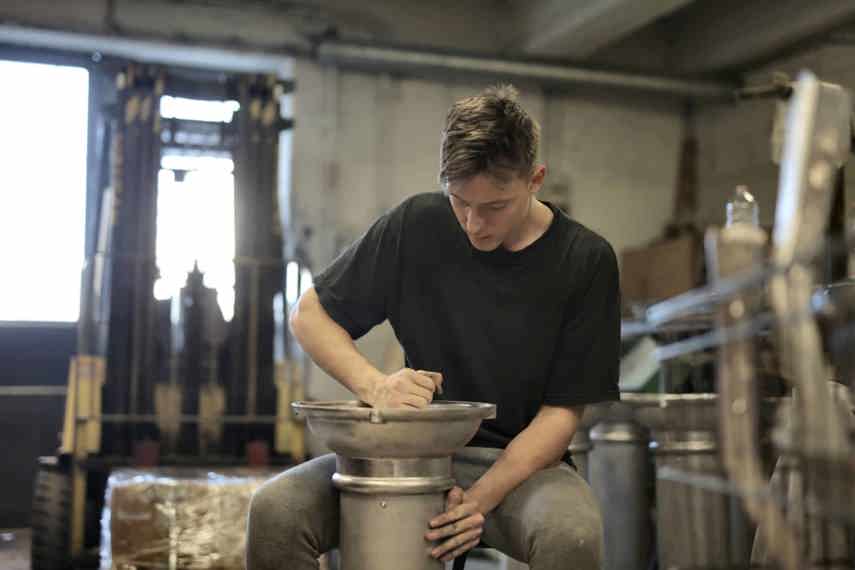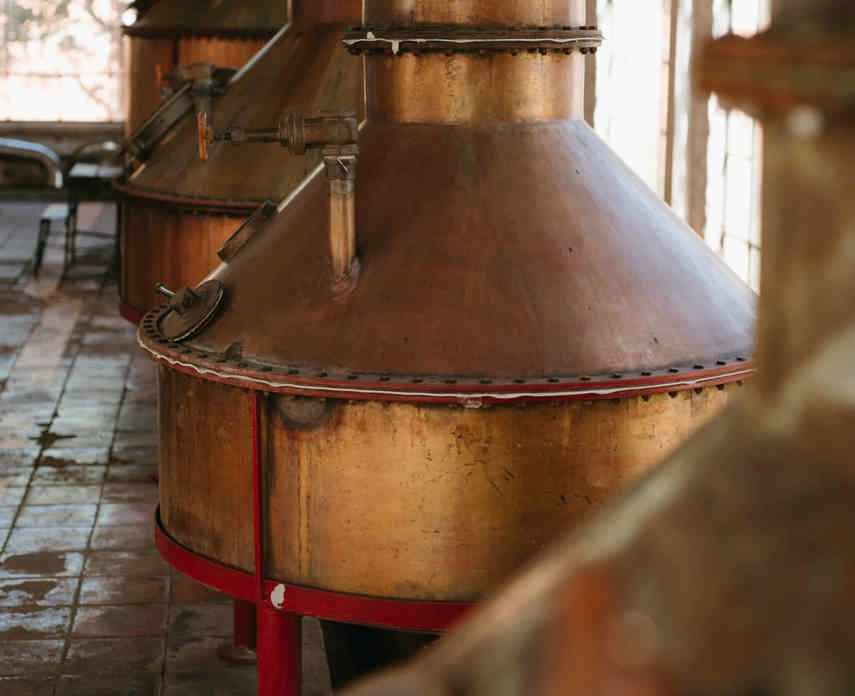
Food and beverage home delivery thrived throughout the recent pandemic and with it alcohol eCommerce. The last few years have seen an emergence of small craft distilleries entering the market to capitalise on this trend and the increase in consumer demand towards uniquely crafted, bespoke alcoholic beverages. This growing trend signals a new era in alcohol distribution, which is especially true for craft distilleries and artisanal brands.
The rise in craft distilleries has contributed to the economy through job creation. However, craft distilleries experience similar limitations as other SMEs – they’re in a competitive space, and must compete with the large commercial distilleries that dominate the industry.
This article explores the state of the craft spirit industry, current trends, latest stats, and other things to watch for in the craft distillery landscape.
What is a craft distillery?
A craft distillery is an independently owned distillery that values quality ingredients and transparency of processes. A craft distillery usually physically distils and bottles its product on-site and has a maximum annual sale of 52,000 cases of that product. The American Distilling Institute (AMI) basis certification for craft distilleries on independent ownership and operation.
Are craft distilleries and micro distilleries the same?
Micro distillery is not a legally defined expression in the world of distilling. Yet the term is often used to refer to small, often boutique-style distilleries established to produce relatively small quantities of beverage-grade alcohol.
The key difference is that a craft distillery uses authentic ingredients and is independently owned. A micro distillery, while small in comparison to the larger brands, can still produce large batches of product. Unlike a craft distillery, not all micro distilleries are independently owned.
 Profit margins for craft spirits range from 20-40%
Profit margins for craft spirits range from 20-40%
How profitable is a craft distillery?
Initial start-up costs of a small craft distillery may require an investment of anywhere between $30,000 and $500,000 factoring in relevant licensing regulations and fees along with the equipment cost of leasing or purchasing stills, fermenters, and mash tuns. It would be impossible to predict what a craft distillery could expect to make annually without considering factors such as size, location, business model and the distillery management style applied.
Craft distilleries must produce a quality spirit that addresses consumer wants and a product that is distinguishable from those of other competing craft distilleries. Packaging plays an important role in the profitability of a craft distillery in that it both distinguishes one craft spirit from other and influences demand through the role it plays during the consumer decision-making process. 90% of consumers examine packaging before making a purchase decision, and 75% of purchase decisions are made at point of sale across the beverage industry.
Profit margins for craft spirits range between 20 to 40 percent and because spirit distilling is less costly than craft brewing it is reasonable to expect distilling is more profitable than craft brewing. Discounting the development of barrel-aged spirits that are left to sit for many years before drinking and therefore selling.
The state of the global craft distillery industry
A growing number of consumers are looking for newer, more exciting options than the narrow range of traditional spirits on offer. Helping to drive revenue and growth in craft distilleries and the craft spirit’s market which is projected to realise a compound annual growth rate just shy of 20 percent between 2020 and 2025.
The North American region currently leads the global market due in part to the growing demand for premium craft spirits and artisanal varieties among consumers. This is further supported by the rising number of craft distilleries with frequent launches of new products and varietals. However, it is expected that the Asia-Pacific region will experience the fastest growth rate in the coming years with the millennial-dense population in China predicted to boost the craft spirits market.
The growing demand for premium craft spirits has emerged largely due to changing cultural attitudes of the affluent younger population and is a significant contributor to the growth of craft spirits market worldwide.
 The UK craft spirits scene is centred around craft gin.
The UK craft spirits scene is centred around craft gin.
Craft distilling in the UK
Craft distilling in the UK has experienced a surge in new start-ups with the number of craft distillery businesses increasing nearly 30 percent during the Covid-19 pandemic. Up from 272 pre-pandemic to over 350 in 2020, craft distilling in the UK is likely to have been driven by lockdowns that allowed people to dabble in and start craft spirit businesses.
Pub closures saw a significant decrease in sales due to the reduction in on-trade purchasing during lockdowns. The growth in craft distilleries encouraged more people to broaden the range of beverages drunk at home, inspired consumers to try new things while ordering online and resulted in greater demand for craft spirits.
Overall spirit sales rose by 10.7 percent across the UK from April to October 2020 compared to the same period the previous year. Consumer motivation to support local is also likely to have contributed significantly to the growth in craft spirit sales during lockdowns.
Several established craft breweries have also expanded into the craft spirit market, establishing their own craft distilleries in recent years.
UK gin for the win
The rising star in the UK craft spirit market is the gin industry. Gin sales have nearly doubled in the last two years and reached a record high in 2021 with Brits spending over £2.6 billion. That equates to around 83 million bottles, so the gin industry is a lucrative one and with flavoured gins helping to diversify the product comes greater opportunity to further drive sales.
Craft distilling in the USA
North America dominated the craft spirits market in 2021 taking out over 61 percent of the global market share. The growth is attributed to the region's large millennial population and a greater demand for ethnic, premium, and flavoured spirits including artisanal and craft spirits.
The number of craft spirit distillers in the US has increased rapidly. This is due in part to better approval policies developed by regulatory bodies. While there are over 2,000 craft distilleries operating in the US, these craft distilleries are considered small businesses within the US hospitality industry. Largely because 60 percent of craft spirit distillers sell fewer than 2,500 cases per year and 70 of these have fewer than 10 employees.
Whiskey wins in America
Unsurprisingly, whiskey rules the craft spirit scene in the US, dominating the market with 36 percent of the category. Craft spirits are projected to continue taking more of the total spirits sector in both volume and value. This value share of craft spirits is predicted to reach double figures in the next two years with Tennessee and blended whiskeys expected to claim the larger share of the potential growth.
Decreasing excise tax on distilled spirits in the US is projected to continue, further improving revenue growth.
 US distillers enjoy a progressive excise tax environment.
US distillers enjoy a progressive excise tax environment.
Craft distilling in Australia
Ten years ago, the Australian craft spirit industry comprised of a few operators primarily focussed on the production of whiskey. Nowadays there are over 300 distillers in Australia and gin production is the leading category. Domestically distilled craft gin however, represents a small percentage of overall gin consumption compared to international imports.
Local spirits challenging imports in Australia
This skew towards imported products is steadily changing however, with domestic spirits growing from less than 5 percent five years ago to well over 15 percent today. The volume of domestically made spirits exceeded import growth in 2020 and the evolution of local producers combined with the changing expectations of a new generation of drinkers is set to continue this trend.
Despite Australian spirits winning awards across the planet for their quality gins, whiskies and rums, Australia currently exports only $4 per capita in spirits. Craft distillers in Australia are disadvantaged in part by having the third highest spirit tax globally, indexed to inflation and twice-yearly increases. Spirit taxes in Australia are significantly higher than the taxes imposed on beer or wine.
Craft distilling in New Zealand
New Zealand has been distilling craft whiskey in the Hokonui Hills since the 1870s and whiskey is still a feature of the craft spirit sector. Fifteen years ago, New Zealand had about a dozen commercial distilleries. This number has grown recently to almost 150 mostly small, family and/or friend-owned craft distilleries. Of these, about 85 percent are following the global trend toward innovative craft gins.
View this post on Instagram
Creating a unique brand identity for Kiwi spirits
The Kiwi aspiration of creating gins with a point of difference is reflected in the innovative style of the gins and evident in the distinctive packaging. The wide range of craft gins created in New Zealand speak to place by finding inspiration in their respective locations. Many use native bush pepper and mānuka leaves or honey while others draw inspiration from distinctive water sources and wild or rare botanicals.
Craft spirits trends
In 2021 the global craft spirits market was valued at USD13.23 billion. It is predicted to reach a whooping USD124.56 billion by 2030 at a compound annual growth rate of 28 percent.
Primary drivers of this market explosion are growing consumer demand for unique, boutique craft spirits, rising disposable incomes and an increase in the number of craft distilleries. Craft spirit consumers have a preference for products made using natural or organic flavours while small-scale distillers are differentiating themselves with clean label ingredients such as spring water and non-GMO grains.
High-earning professionals with financial and professional service backgrounds are often attracted to developing craft distilleries as a new career path or for change of pace. Having learnt from the craft beer industry, craft distilleries are looking to increase budgets and capabilities at a manageable rate. This strategic trend is projected to be the future of the craft spirit’s market.
Gin, whiskey, rum, and vodka are the four fastest growing categories in the craft spirit market.
1. Craft gin distilling
Since the beginning of the pandemic, gin is the fastest growing spirits category of the four, achieving a growth of over 22 percent in value. Gin’s unique texture, flavour, and taste of juniper berries has been enhanced with craft distillers appealing to consumer taste for artisan gins by using regional botanicals, aged expressions, and creating new flavours.
Gin in particular can be created without the long barrel-aging process required of products like rum and whiskey, making it an easier product for new distillers to bring to market.
2. Craft whisky distilling
While gin emerged as the leading spirit by category overall, the whiskey segment led the charge in 2021 accounting for a 45 percent share of global spirits revenue and this trend is expected to continue. The on-trade craft whiskey segment is expected to realise the largest market share of 59 percent and the creation of craft whiskey-based cocktails is expected to help boost the industry.
For years whiskey has been credited with delivering certain medicinal benefits such as relief for toothache or in hot toddies to combat a cold. Product developments over the years and craft distillers increasingly adding in a variety of herbs and spices not only extends the whiskey offering on taste but also medicinal purposes. Whiskey can also contain polyphenols, an antioxidant shown to lower bad cholesterol while raising good cholesterol.
 The craft whiskey sector is chipping away at the big brand whiskey market.
The craft whiskey sector is chipping away at the big brand whiskey market.
3. Craft rum distilling
The craft rum category is expected to reach USD1.70 billion by 2028 and as with other craft spirit categories the revenue growth can largely be attributed to rising demand from younger consumers. Rum has always been widely available in various forms such as dark, light, gold, black and white rum, including coconut and vintage rum.
Craft rum distillers offer a modern twist to the authentic flavour of rum by using handpicked ingredients and unique flavour combinations. The most popular type of craft rum is spiced rum, infused with a variety of spices including cinnamon, ginger, vanilla, nutmeg and pepper.
4. Craft vodka distilling
With over 1,000 different brands, vodka is the most popular beverage category internationally. The US alone consumes around 75 million cases a year, roughly 23 percent of the total – and approximately one third of US spirits sales are vodka. Vodka can be made using any grain including barley, corn, wheat, and rye. Even fruit and vegetables such as potatoes and grapes can be used as a base.
Distillery Inventory Management Software to Lift Your Spirits
Unleashed streamlines the back end of your spirits distillery business – so you’re free to get back to the products you’re passionate about Learn more
Craft distillery software
New technologies, software systems and solutions make the process of running a craft distillery more efficient. The right technology is crucial when scaling distillery operations.
- Distillery management tools help distilleries function smoothly throughout the distillation process. The right software enables customisation of product flows, batches, and tracking.
- CRM software can track and manage all lead, prospective and existing customer information.
- Sales automation software enable sales activities and performance tracking.
- Inventory management systems enable craft distillers to manage inventory of raw materials, WIP, and finished goods – tracking inventory during each phase of aging and storage, throughout the entire product lifecycle.
In today’s market the use of technology is essential to improve the efficiency and productivity of a craft distillery, especially as smaller operators take on the global spirits corporations. Increasingly success in the craft distilling space is a function of smart technology use – combined with traditional craft skills and skilful marketing.
